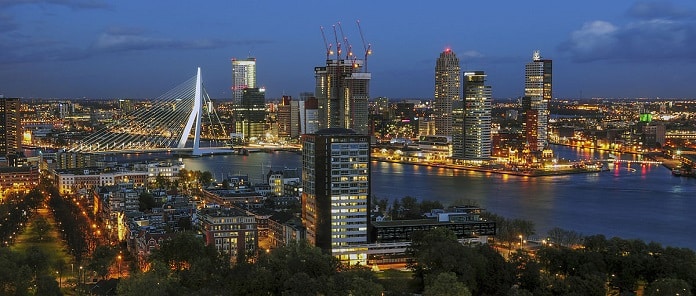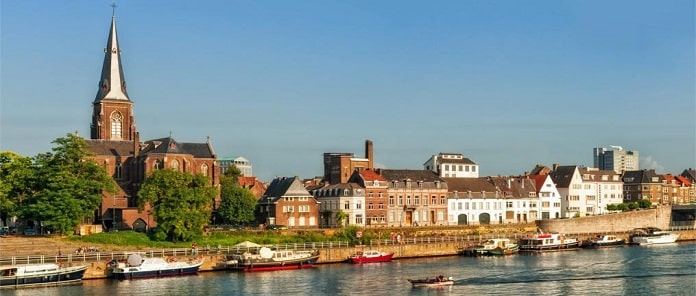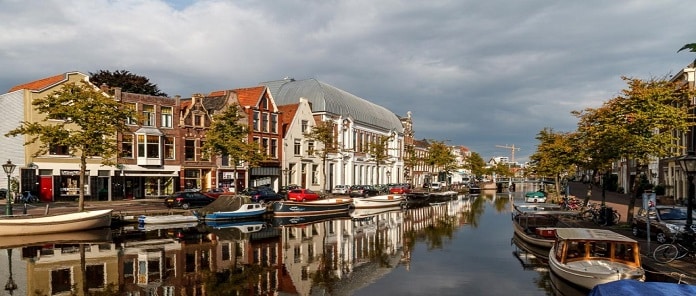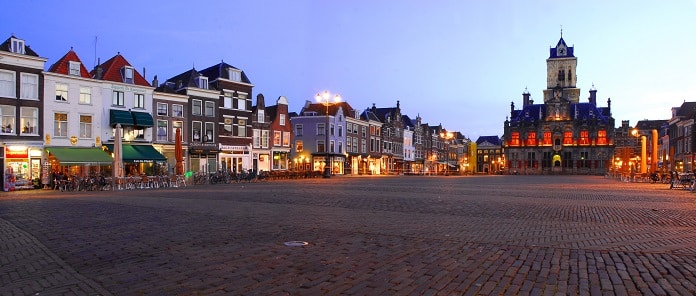From atmospheric cellar bars and historic windmills to tulip fields and world-renown art, discover the delights of the top things to do in the Netherlands.
There’s more to see in the Netherlands than its cosmopolitan and laidback capital of Amsterdam. The Netherlands may be a small country but it’s packed with history, has beautiful countryside bursting with wildlife and unique flora, and a mind-blowing amount of world-class art and museums. It’s well worth venturing beyond Amsterdam’s limits to discover an array of top sites and things to do around the Netherlands.
1. Rotterdam

Culture vultures should head for Rotterdam. It’s got outstanding contemporary and historic art collections, hosts the summer North Sea Jazz festival and International Film Festival, has plenty of lively clubs and bars, and boasts innovative architecture. According to the New York Times, “Rotterdam is increasingly to architecture what Paris is to fashion, or Los Angeles to entertainment.” Much of the city was destroyed in World War II paving the way for a selection of bold modern architecture, such as the 1980s Cube Houses, the Erasmus Bridge (nicknamed ‘The Swan’), the Kunsthal Museum, and since 2014, Market Hall (Markthal), the strikingly curvaceous marketplace with an 11,000sqm mural ceiling over a mix of grocery stalls, restaurants and bars. For a more historic atmosphere, head down to the tall and narrow harbour-side buildings around Delfshaven.
2. Groningen

This culturally diverse university city is small but boasts two colleges, making it the main place to visit in the northern part of the Netherlands, especially concerning the arts, business, and education. Museum lovers never tire in Groningen, as the Groninger Museum is one of the most innovative and modern in all of Holland, and there is additionally a graphical museum, comics museum, maritime museum, and a university museum. Music and theater abound in Groningen, and many street cafes feature live entertainment. Because of its high student population, nightlife hotspots are a huge attraction, with The Grote Markt, the Peperstraat, and the Vismarkt being the most popular.
3. Utrecht

The rich Middle Age history of Utrecht is very apparent in the city’s architecture, with its most unique feature being the inner canal wharf system that was created to stave off parts of the Rhine River from invading the city center. Utrecht’s claim to fame may be the fact that it boasts the largest college in Holland, the University of Utrecht. Another notable visitor attraction in Utrecht includes the awe-striking Gothic Cathedral of Saint Martin, a 200-year structural feat that began in 1254. Architecture and museum enthusiasts should not miss the Dom Tower, the Rietveld Schroder House, and the Museum Speelklok, which boasts a vast collection of striking clocks, music boxes, and self-playing musical instruments.
4. Amsterdam

One of Europe’s most popular tourist destinations, Amsterdam is widely known for its party atmosphere, cannabis practice and the red light district. With over 1500 fabulous monumental buildings and just as many bridges, visitors to Amsterdam spend much of their time exploring the eccentricities and marvelous museums dotting the 60 miles of canals across the city. The Anne Frank House and the Rijksmuseum Museum are the most popular stops for history and art seekers, while the Prinsengracht area is one of the best places for shopping, gallery viewing, pub crawling, and checking out the unique coffee shops in Amsterdam.
5. Maastricht

In the south of the Netherlands Maastricht seems ‘less Dutch’ than other Dutch cities; it has Spanish and Roman ruins, French-influenced architecture, an international atmosphere (perhaps because it’s so close to Belgium and Germany) – and it’s even surrounded by hills. Set either side of the Meuse river it’s a truly beautiful place, with a historic centre filled with churches, squares (have a beer in the cobblestoned het Vrijthof square), old houses, fortifications and museums above ground, and miles of tunnels and caves (the Caves of St Pieter and the Casements) underground. Maastricht is also renowned for its world-class restaurants (five Michelin-starred restaurants within five miles of the centre), so come hungry and equipped with a credit card.
6. Leiden

The picturesque city of Leiden is a great place to visit for its scenic, tree-lined canals that are marked with old windmills, wooden bridges and lush parks. A boat ride down one of these lovely canals makes for an unforgettable experience. Attractions in Leiden include the numerous museums that range from science and natural history to museums dedicated to windmills and Egyptian antiquities. The Hortus Botanicus offers sprawling botanical gardens and the world’s oldest academical observatory. Visitors can also admire the beautiful architecture of the 16th century Church of St. Peter and check out its association with several historic people, including the American pilgrims.
7.Haarlem

Only a stone’s throw from Amsterdam is the charming city of Haarlem, in the middle of the Netherlands’ tulip-growing region. As you walk the cobbled streets and take in the ornate 17th-century architecture or sit sipping a coffee on Grote Markt square among rising monumental buildings, it’s easy to imagine the city as it was in its heyday during the Dutch Golden Age of the 17th century. It was a powerful place: a thriving commercial centre, an inspiration for artists, the tulip capital and producer of huge quantities of beer. You don’t have to imagine what the citizens looked like – check out their vivid portraits by the Dutch master Frans Hals and others in the eponymous museum. St Bavo Church, the eclectic collection in the Teylers Museum, and the city’s almshouses are also worth a look.
8. Delft

From the Renaissance style City Hall building on the Markt Square to the city’s traditional Holland canals, architecture, and vibe, Delft is a progressive town that has worked diligently to restore its antiquated appearance. This unspoiled town is an ideal day trip destination or vacation destination if the busy streets of Amsterdam are undesirable for a long stay. Popular sites include The Prinsenhof, where the bullet holes still remain from the death of William of Orange. This museum tells the tale of the Eighty Years’ War and also features many intriguing artworks. Those looking for a Johannes Vermeer souvenir or print cannot miss stopping by Vermeer Centrum in Delft.
9. Windmills at Kinderdijk

When you think of the Netherlands, you probably conjure up windmill images. Historically they were a vital part of the water management system designed to prevent flooding in this low-lying land. Come to the village of Kinderdijk (which means ‘children dike’) not far from Rotterdam to admire the spectacular sight of a network of 19 fully functioning windmills on the polders. They were built around 1740 and were awarded UNESCO World Heritage site status in 1997. Today you can see them in operation during the summer months. If you’re visiting in winter, bring your ice skates and join the skaters on the frozen canals.
10. The Hague

The Hague or Den Haag is the seat of the Dutch government and home to the Dutch Royal family. This elegant city has wide leafy streets, several palaces, fantastic restaurants, smart hotels, luxury shops, loads of museums and a whole clutch of beautiful and historic squares such as the Plein and Grokte Markt, where you can enjoy a coffee by day and go clubbing by night. Take a tour of Het Binnenhof, the home of the Dutch parliament since 1446. Art fiends can view the world’s largest Mondrian collection in the Art Deco buildings of the Gemeentemuseum Den Haag (Municipal Museum) as well as a selection of Golden Age masterpieces in the Mauritshuis museum. If you have kids (or you’re a big kid yourself) a day in the miniature world of Madurodam should keep everyone happy.
